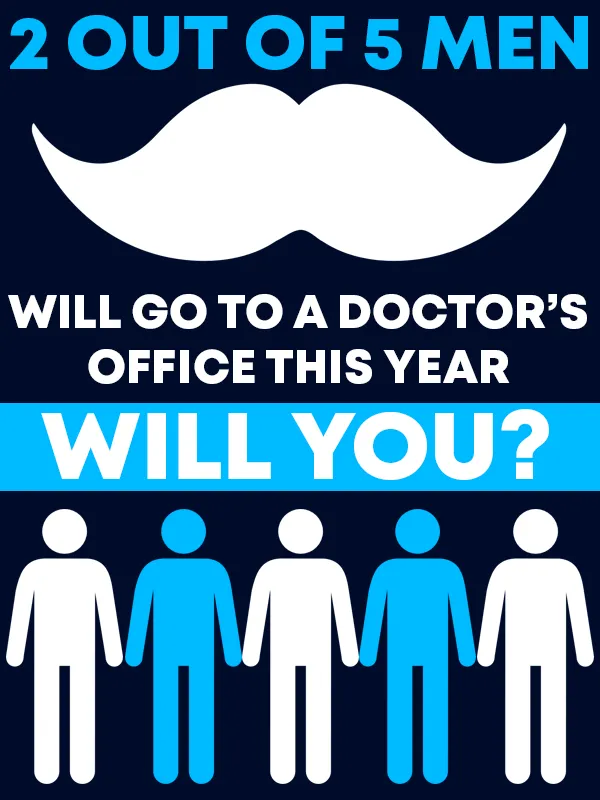Men's Health
Men’s Health Week has been recognized since 1994 during the week of Father’s Day. While established as just one week, many healthcare facilities recognize the entire month of June as a time to spotlight the importance of men’s health.
Men’s Health Month is more important now than ever – life expectancy of American men is now about 5 years less than women. There are numerous reasons why this is the case.
Statistically, men make up a larger percentage of the workforce in the most dangerous jobs. They are also perceived to take on riskier hobbies and activities in their free time.
But health comes into play in three key risk categories that could be contributing to men’s decreased life expectancy. First, men are considered obese at a more frequent rate than women, which is just one reason why men are more likely to have heart attacks (it caused 1 in 4 male deaths in 2020). Second, more men are/were smokers, and thus more likely to develop lung cancer.
Lastly, a potential underlying factor to the previous points is that men simply visit their doctor’s office less frequently than women. They are less likely to attend an annual physical, and that can delay how early a health condition is diagnosed.
Can You Be the Difference to Improve these Statistics?
41.5%
percentage of men ages 18-44 that visit a doctor's office in a given year (2016, CDC)
38.9%
percentage of men ages 45-64 that visit a doctor's office in a given year (2016, CDC)
43%
of men are obese (2018, NIDDKD)
1 in 4
men do not get enough physical activity each day (2022, WHO)
Why Men Should Schedule Their Annual Physical
As the above statistics indicate, only about 2 out of 5 men visit a doctor’s office in a given year. This is a much lower rate than for women. Men may each have their own reasons for choosing not to attend annual physicals, but the importance can not be understated.
An annual visit is a time for your provider to assess your current health picture and potentially catch complications before they become larger issues. With many diseases, an early diagnosis is crucial to achieving the best possible outcomes. While more advanced screenings like a colonoscopy or prostate screening are done at a separate visit/facility, your annual physical is a time to find out when you need to schedule those screenings. This is of particular importance for the key age group of 45 to 64.
If you have health insurance, it is often no cost to you to attend an annual physical (verify with your insurance company). An estimated 16% of American men under age 64 however do not have health insurance (source). If you do not have insurance but want to attend an annual physical or screenings, call your provider’s office to learn about discounts available for paying at the time of service.
What Common Screenings Should Men Have?
– Colonoscopy
– Prostate Screenings
Part of Your Annual Physical:
– Blood Pressure Check
– Cholesterol Check
– Diabetes Check
– Skin Cancer Check
Super Foods for Men
These foods have universal health benefits for both men and women. But they address in helping some potential “blind spots” men may have in their diet or nutritional intake.
Almonds
With protein, fiber, and vitamin E, eating almonds is great for your heart, digestive system, and skin.
Olive Oil
Cut the butter and replace it with olive oil. Studies believe it will help decrease your risk of heart disease.

Black Beans
Packed with protein and fiber to keep you feeling full and energized longer. Similar benefits to meat without the saturated fats.

Water
Each day men need to drink an average of 35 more ounces of water than women. Make drinking water a habit.
What Diseases are More Common in Men?
Men’s Health Network published 2018 data comparing common causes of death between men and women (source). “Diseases of the heart” were twice as common in men as they were in women. The CDC reported in 2020 that 1 in 4 male deaths were the result of a heart attack.
Lung cancer is a concern for both men and women – but more prominent in men. The National Institute on Drug Abuse reports that as recently as 2019 that 15.3% men and 12.7% of women smoked cigarettes. A reported 1 in 16 men will develop lung cancer in their lifetime, with it being most probable for those who previously smoked.
Melanoma is a type of skin cancer that is more common to occur in men after age 50. While melanoma is serious, it is among the most treatable cancers if it is caught early enough.
Kidney stones are also more common in men, with 11% of men experiencing kidney stones compared to 6% of women. A diet high in protein and salt as well as consistently poor hydration can contribute to kidney stone formation. Evaluate your diet and hydration needs if you think you are at an elevated risk of developing kidney stones.
Why Do Men Go Bald?
Balding is largely influenced by genetic factors, and it may be more common than you realize. A reported 50% of men will experience hair loss by their 50th birthday. The Mayo Clinic reports hair most commonly thins at the top of your head, with your hair line receding. Interestingly the hair at your ear level and lower rarely fall out. Besides genetics, hair loss can also be the result of stress, poor nutrition, and medications.

Phone: (320) 251-2600
Fax: (320) 251-4763
Email: info@integracareclinics.com
Clinic Hours: M/W 8am-6pm & Tu/Th/F 7am-5pm
Copyright 2024, Integracare LTD, All Rights Reserved. Information on this website should not be regarded as medical advice.

